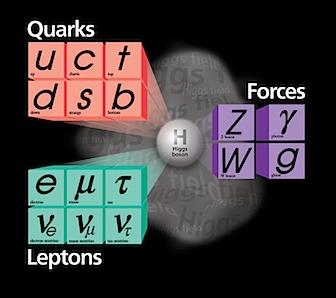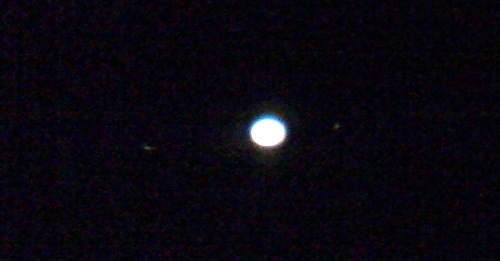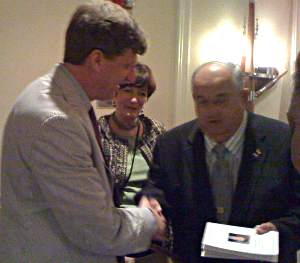CERN finds strong evidence of new particle which may be Higgs boson
By John McDaid | Wednesday, 4 July 2012
|
| Click to couple to the Higgs field. Image courtesy of US Dept. of Energy |
In an early morning seminar, scientists at the European Organization for Nuclear Research (CERN), announced results from the Large Hadron Collider (LHC) ATLAS and CMS experiments which strongly suggest (at the level of five standard deviations, or "five sigma") a new elementary particle with a mass of roughly 125 billion electron-volts (125 GeV), which, researchers said, makes it a candidate for the long-sought Higgs boson.
"We observe in our data clear signs of a new particle, at the level of 5 sigma, in the mass region around 126 GeV," said ATLAS experiment spokesperson Fabiola Gianotti in a CERN press release. "The outstanding performance of the LHC and ATLAS and the huge efforts of many people have brought us to this exciting stage, but a little more time is needed to prepare these results for publication."
"The results are preliminary but the 5 sigma signal at around 125 GeV we’re seeing is dramatic. This is indeed a new particle. We know it must be a boson and it’s the heaviest boson ever found,” said CMS experiment spokesperson Joe Incandela. “The implications are very significant and it is precisely for this reason that we must be extremely diligent in all of our studies and cross-checks."
Here's a bit more from the release:
The results presented today are labelled preliminary. They are based on data collected in 2011 and 2012, with the 2012 data still under analysis. Publication of the analyses shown today is expected around the end of July. A more complete picture of today’s observations will emerge later this year after the LHC provides the experiments with more data.
The next step will be to determine the precise nature of the particle and its significance for our understanding of the universe. Are its properties as expected for the long-sought Higgs boson, the final missing ingredient in the Standard Model of particle physics? Or is it something more exotic? The Standard Model describes the fundamental particles from which we, and every visible thing in the universe, are made, and the forces acting between them. All the matter that we can see, however, appears to be no more than about 4% of the total. A more exotic version of the Higgs particle could be a bridge to understanding the 96% of the universe that remains obscure.
“We have reached a milestone in our understanding of nature,” said CERN Director General Rolf Heuer. “The discovery of a particle consistent with the Higgs boson opens the way to more detailed studies, requiring larger statistics, which will pin down the new particle’s properties, and is likely to shed light on other mysteries of our universe.”
Positive identification of the new particle’s characteristics will take considerable time and data. But whatever form the Higgs particle takes, our knowledge of the fundamental structure of matter is about to take a major step forward.
And here's the most accessible piece I've found on how to think about the significance of the Higgs, explained in simple, cartoon form:
The Higgs Boson Explained from PHD Comics on Vimeo.
Resources
CERN press release
CERN liveblog of event
Fermilab press release
CERN explainer
io9's delightful opinion piece, "Stop calling it 'The God Particle!'"
Editorial note: Written from press releases.

